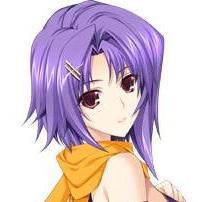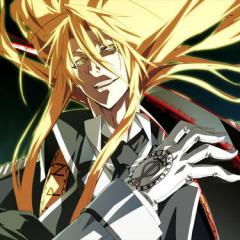Leaderboard
Popular Content
Showing content with the highest reputation on 10/02/19 in Blog Entries
-

Steel [Graviton]
onorub and one other reacted to kivandopulus for a blog entry
Foreword: I never expected a 80 hour long race out of this "episodic" story. How much time should pass till opening? What about length of the epilogue? Should there be some lines after the final credits? Believe me, Steel will surprise you with each answer. I knew that scenario from Kadokura Keisuke would be enjoyable. But it took me a full week to be able to digest it. VNDB: https://vndb.org/v6416 Youtube:https://www.youtube.com/watch?v=N5Nc368AlSs&list=PLs4Gp5VU4Fv9jHMWwIIkzFPiTpLJ-eMP7 Synopsis: The protagonist, Tomoya, was abandoned by his mother at a tender age. He was taken in by Honjou Arisa after a chance meeting. Four girl adoptees who had joined the Honjou family home for similar reasons also lived there. Though they were not related by blood, Tomoya treated the girls as if they were his siblings. They lived peaceful lives at the Honjou residence... but one day, he encountered a strange woman in town. She was wreathed in something that looked like iron – and upon seeing her figure, he remembered that he, too, had once harbored such a metallic augment. "Is that... your Anima?" A right arm turned to metal... A peculiar corpse discovered at school... A transfer student exuding dark mist... And a foreign warrior wreathed in thick steel armor... Tomoya's peaceful life would soon begin to crumble as disaster came to visit him and his sisters. To protect them, he shall have to once again wreathe his right arm in Anima. Game type: Supernatural abilities chuuni story Character Design rating: 8/10 Protagonist rating: 7/10 Story rating: 9/10 Game quality: 4/10 Overall rating: 7/10 Basics first. This is a story of a big and powerful Honjo clan. Main character Tomoya is an adopted child who lives in the family for the last five years. Only few families possess the anima ability to turn their body into weapons. They have rivals, but don't show their powers to the outsiders. Tomoya only starts to master his anima. That brings us to structure. There are four chapters. Three first chapters have similar shape. Each of them is devoted to Honjo sisters and their anima - first Misaki, then Ayano, finally Iori. These three chapters have two endings each - initially the true one when the heroine comes off the stage in some way and then the side happy ending with each heroine. After each of four chapters there's a short explanatory chapter which is devoted mostly to past events and Honjo Alice heroine. The fourth chapter has only one ending and is devoted to the most mysterious heroine Nishinomiya Akizuki. It also covers most of the loose ends of the game. Epilogue chapter (with a small Final chapter which finalizes Explanatory Chapters) is very different from the other chapters and presents after-story for the different characters that remain on the stage up to the point. Phew, with that covered - almost - without spoilers it's possible to go on. Story is thrilling, and text is really rich. Characters are quite developed despite having no voicing thanks to whole 15-hour long chapter devoted to each of them. What I liked the most is that there are very few SOL scenes. Protagonist Tomoya starts off pretty well with all his powers awakening gradually and evolving with more emotional experiences. But game really lacks a good conflict. There are some goons (including elite ones) from the rival family, but that's it. So in result Tomoya just does not have opportunity to actually fight since we constantly need to show battle prowess of our chapter heroines. Thus he gets from cool to passive losing charm. Due to the lack of conflict some fights happen even between heroines out of trifles. But on the other hand, some antagonists jump to the stage out of the blue. Momentum never gets lost. Time to get back to story since it's the main flavor of the game. Each chapter is actually very different, so we can't stop being surprised. Misaki chapter is our straightforward nakige with personal drama and focus on the heroine alone. Ayano chapter suddenly changes focus from heroine to her anima. Iori chapter is totally different again since Iori actually can't fight. Maid Noriko has to fulfill that function, so Noriko actually gets her own ending as well. Third chapter also marks the main conflict of the game and uncovers Honjo clan secrets. Fourth chapter has the most straightforward conflict between main heroines Alice and Akizuki against their own antagonists. As for epilogue, it gives off too much of Clannad scent which is a great minus for such Clannad hater as me. Each chapter is named after anima name and explanatory chapters are called Shizoid because of the very different perspective presented. The saddest part is graphical presentation and absence of voicing. That gives a huge penalty to the quality evaluation. I can't really imagine many persons to be able to read such a huge story with such poor presentation. But - on the other hand - how many real modern masterpieces are there without voicing? Can't really remember even one out of the blue. That's an enormous feat by itself.2 points -
Kazuki Fumi and Silky's Plus Wasabi's newest game has arrived. This is the third game in the series that began with Nanairo Reincarnation. I will say this outright from the beginning... this game isn't as good as either Akeiro or Nanairo. It does have its high points, but it needs to be noted that this is not on the same level as the previous two games. This game uses the Emote system heavily, with the sole heroine (Annelise) being extremely 'animated' (think constantly swaying boobs) to a degree I haven't even seen in other games that utilize this system. Similar to the other games in the series, this game has excellent artwork that differs from most other Japanese VNs. The music in this game isn't as good as Akeiro's or Nanairo Reincarnation's was. To be blunt, in both the previous games, the music played a strong role in making the game what it was, and the music direction (when to use what BGM) was on the highest levels I've seen in the VN industry. Unfortunately, this game falls far short of either of those two in this area, with a much weaker set of BGMs. The game focuses around the protagonist's efforts to solve the mystery behind the mass suicide of the denizens of an apartment in the same town Nanairo Reincarnation was based in. Based on what is said in-game, the canon path that reaches to this game is Kotori's path in Nanairo and Youko's path (the Tsukihime-style normal ending) in Akeiro. Also, based on certain 'events', it is apparent that around two decades have passed since the events in Nanairo, for reasons that will become rather obvious early in the game (in other words, play Nanairo and Akeiro first if you don't want to be spoiled). To be blunt, this game has a much tighter focus on the mystery element than either of the previous games, with less immediate sentimentality and more confrontation with the dead people 'living' in the apartments. In addition, Anne's constant advances help it retain the goofiness that was present in both the previous games. This game has multiple endings, but I chose to only play the true one, as I figured (and I was right) that it would have the best possible result for everyone involved. Of course, when everyone besides the protagonist is dead or inhuman, that can be somewhat bittersweet. If you were to ask me whether it was worth crying over what happened in this game, I would say yes... in particular, I cried for Kanon and Akira (two of the victims), as their lives and final deaths were the most tragic and their natures (surprising in the case of Akira) were the least inimical to others. The true ending is definitely a tear-jerker...though it doesn't pull the tears out of me to the degree that either of the previous games did. Part of this is that both Akeiro and Nanairo are long games with extensive, detailed, and deep character development and superb presentation. The other part is that, while I predicted the truth behind what happened about two-thirds of the way through, I found that the mystery 'investigation' system crippled the game's ability to draw me in and keep me in. To be blunt, if a game only has a single heroine, I only want minimal choices to be present, and I certainly don't want to have to deal with this kind of gameplay. The gameplay is too perfunctory to be enjoyable, and it is too intrusive and intrinsic to the game as a whole for the reader to be able to stay fully engrossed in the experience. In conclusion, this is a game where the concept was good and the staff was first class, but where the attempts to be clever (such as with the gameplay system) fell flat. It is still a reasonably high-level game, but, considering what Kazuki Fumi has managed to do in the past with this universe, I can't help but feel it could have been handled better.1 point


